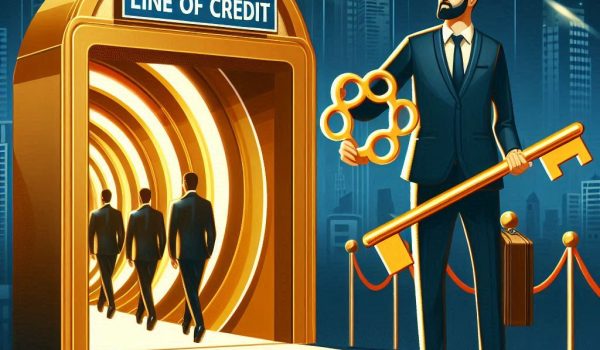Finding the Right Revolving Line of Credit for Your Business
As a business owner, maintaining a healthy cash flow is crucial for the smooth operation and growth of your enterprise. One effective financial tool that can help manage cash flow fluctuations is a revolving line of credit. This article will guide you through the essentials of revolving lines of credit, helping you make an informed decision for your business.


What is a Revolving Line of Credit?
A revolving line of credit is a flexible financing option that allows businesses to borrow, repay, and borrow again up to a specified credit limit. Unlike a traditional loan, where you receive a lump sum of money upfront, a revolving line of credit provides ongoing access to funds as needed. This makes it an ideal solution for managing short-term working capital needs, covering unexpected expenses, or taking advantage of growth opportunities.
Benefits of a Revolving Line of Credit

You can draw funds as needed and repay them at your convenience, making it easier to manage cash flow.
Interest is only charged on the amount you borrow, not the entire credit limit.
Once you repay the borrowed amount, the credit becomes available again, providing continuous access to funds.
Helps bridge gaps between receivables and payables, ensuring smooth business operations.
Regular, responsible use can help build your business credit profile.
Requires collateral, such as inventory, accounts receivable, or other business assets. Typically offers lower interest rates due to reduced risk for the lender.
Does not require collateral but may come with higher interest rates and stricter qualification criteria.
Types of Revolving Lines of Credit

Key Considerations When Choosing a Revolving Line of Credit

Assess your business needs to determine the appropriate credit limit. Too low a limit may not cover your expenses, while too high a limit could lead to unnecessary debt.
Compare interest rates from different lenders. Look for competitive rates that align with your business’s financial health.
Be aware of any fees associated with the line of credit, such as origination fees, maintenance fees, or draw fees.
Understand the repayment schedule and terms. Some lines of credit may require monthly payments, while others offer more flexible repayment options.
Determine why you need a line of credit and how much you require.
A higher credit score can improve your chances of approval and secure better terms.
Prepare necessary documents, such as financial statements, tax returns, bank statements and debt schedule.
Research and compare offers from banks, credit unions, and online lenders.
Submit your application along with the required documentation. Be prepared for a thorough review process.
Carefully review the terms and conditions before accepting the offer.
Steps to Secure a Revolving Line of Credit

Common Uses for a Revolving Line of Credit

Cover expenses during slow periods and repay during peak seasons.
Buy inventory in bulk or take advantage of supplier discounts.
Ensure timely payment of employees during cash flow gaps.
Address unexpected expenses, such as equipment repairs or urgent orders.
Invest in marketing initiatives to drive growth without straining cash flow.
Pros and Cons of a Revolving Line of Credit
Pros
Access funds as needed and repay at your convenience.
Pay interest only on the amount borrowed.
Continuous access to funds once repaid.
Responsible use can improve your business credit score.
Cons
Can be higher than traditional loans, especially for unsecured lines of credit.
May include various fees, such as origination, maintenance, or draw fees.
Stricter requirements for unsecured lines of credit.
Easy access to funds can lead to excessive debt if not managed responsibly.
Tips for Managing a Revolving Line of Credit

Only draw funds when necessary and avoid overborrowing.
Keep track of your expenses and ensure you can meet repayment obligations.
Timely repayments can help improve your credit score and secure better terms in the future.
Stay informed about any changes in terms or interest rates.
Have a clear repayment plan to avoid accumulating excessive interest.
Conclusion
A revolving line of credit can be a valuable financial tool for business owners, providing flexibility and access to funds when needed. By understanding the different types of lines of credit, evaluating your business needs, and carefully comparing lenders, you can find the right revolving line of credit to support your business’s growth and stability. Remember to use this financial resource responsibly to maximize its benefits and avoid potential pitfalls.

Subscribe to our weekly newsletter sharing industry insight, financial education and tips and hacks to getting funded.
